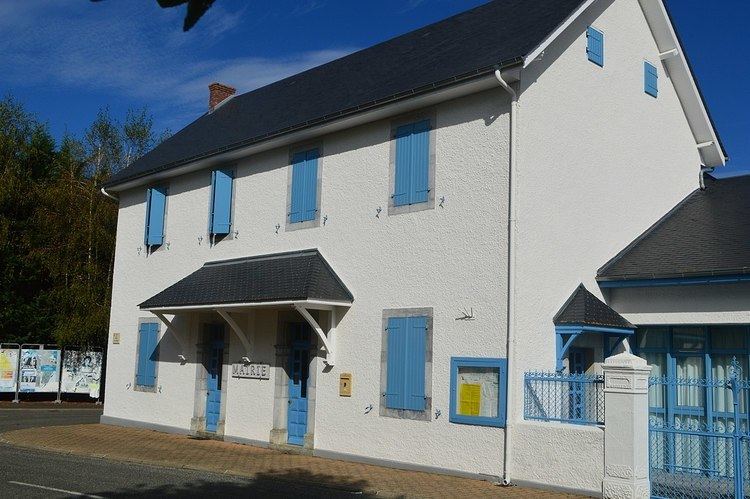Area 4.75 km² | Population (2014) 177 Local time Tuesday 2:03 AM | |
 | ||
Intercommunality Communauté de communes Ousse-Gabas Weather 9°C, Wind W at 13 km/h, 79% Humidity | ||
Aast is a French commune in the Pyrénées-Atlantiques department in the Nouvelle-Aquitaine region in southwestern France.
Contents
- Map of 64460 Aast France
- Location
- Hydrography
- Toponymy
- History
- Administration
- Demographics
- Economy
- Civil heritage
- Religious Heritage
- References
Map of 64460 Aast, France
The inhabitants are known as Aastais.
The local pronunciation is aas with a highly nasalised 'a' and a silent 't'.
Location
The village is situated on the plateau of Ger and is composed of a dozen scattered houses. Aast is 20 km east of Pau and 20 km north of Lourdes. Access to the commune is by road D70 then D311 north-east from Gardères, road D64 north-west from Ger, and road D311 when coming south from Ponson-Dessus. Other country roads can also be used to access the commune.
Hydrography
Located in the Drainage basin of the Adour, Aast is traversed by the Carbouère stream, a tributary of the Louet river.
Toponymy
Aast is the first French commune in alphabetical order. Previously, Aas, another commune in the Lower Pyrenees, came first until 1861, when it merged with the commune of Assouste to form the new commune of Eaux-Bonnes.
The commune's Béarnais name is also Aast.
According to Dauzat and Rostaing Aast comes from the Basque ast ("rock"). This seems unlikely given the physical setting. Michel Grosclaude suggests that the name of the town derives from an anthroponym composed of Aner + Aster. Brigitte Jobbé-Duval recalls that in 1429, Aast appeared as Hast, which means lance, and therefore advanced the theory that Aast could refer to a battle that occurred there.
The following table details the origins of the commune name.
Sources:
Origins:
History
There was a Lay Abbey in Aast which was abolished in 1791. The Lordship of Aast was owned by the Day family from 1674 until the French Revolution. In 1678, Jérome de Day, adviser to the king, bought the abbey and tithes with rights of patronage: he was to provide a priest and entitled to receive a portion of the tithe, to sit in the choir, to be first to receive the blessed bread, and to be buried in the church.
Administration
List of Successive Mayors of Aast
(Not all data is known)
Demographics
In 2010 the commune had 192 inhabitants. The evolution of the number of inhabitants is known through the population censuses conducted in the town since 1793. From the 21st century a census of municipalities with fewer than 10,000 inhabitants is held every five years, unlike larger towns that have a sample survey every year.
Sources : Ldh/EHESS/Cassini until 1962, INSEE database from 1968 (population without double counting and municipal population from 2006)
Economy
The 2006 classification by INSEE, indicating the median household incomes for each commune with more than 50 households (30,687 out of the total of 36,681 communes identified) ranked Aast at 5274, with an average annual income of €18,858.
Civil heritage
The town has a number of old farmhouses:
Religious Heritage
The Church of Saint Martin (1854) dedicated to Saint Martin of Tours was built under Napoleon III during the administration of Mayor Bartholomew Lassus. Recently renovated by the artist Villarubias, there are many objects in the church registered as historical objects:
